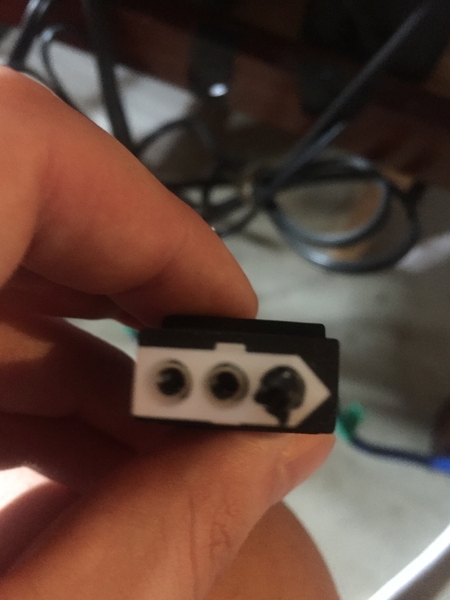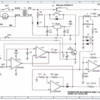@ Fellow Railroaders:
The code writers have actually given model railroaders a lot of consideration in the use of relatively high currents for train power, compared to the limitations placed on other low voltage circuits which can be found in residences. Beyond that, we are trusted to devise our own acceptable practices to a certain extent. We need to remain aware of the need to maintain that trust. It is in that spirit I write on the safety aspects of the issue here. I include no proprietary information, as I have none-- a life-long habit of not asking.
I first posted on this subject 20 or 25 years ago, at the introduction of the 135 VA (volt-amperes) "power house" transformer (Lionel). The problems of equipment damage occurred with cutting the special end connector off the PH (3-pin holes in house-roofed block as now). Some users made conversion connectors to TUIs, avoiding PH changes (Note 1).
Damage occurred either to the PH or the TIU. Information from users (85 cases of damage on OGR) was incomplete in key areas in most reports. However, I could in two cases realize the two ways in which the 135 PH was being damaged. I had opened my 135 PH (Note 2)-- its output to the track (21, to 18 volts at 10 A rated output passed thru a 10 A relay (Million Spot). This relay had no published data as to whether it could be closed into a 10 A load, or open a 10 A load. It was intended to do the latter at about 10.5 A according to others here.
I measured the maximum short circuit current this 135 PH could produce-- it is 105 A. 0r (Note 2, and if you contrive a dead short across the transformer in hopes of measuring 105 A you will destroy the PH.)
The two relays, of the 85 cases, had sufficient circuit and circumstance info to say that obviously in one case, the relay contact had burned open, and in the other, had welded closed-- both at the users' layouts. Some users identified the problem as a PH breaker defective at the factory.
For the 180 VA PH, I have been told it contains a 15 A relay. I think short circuit current has been posted here (not necessarily proportional to the 135). Still, I can say by inspection the relay can fail in the same way. I have seen (it's been posted here) a diagram which at a glance I take to be an accurate time delay on the relay. Some day I may confirm that and calculate the delay. Or not.
At the time (of the 135 PH), the NEC code for Toy Transformers (see posts above) was changed, and a basic former requirement, that such transformer be able to interrupt any short circuit current it could produce, was simply dropped without explanation.
There is a comment that the NEC is not intended to regulate the low voltage wiring downstream of such transformers, except (the transformer being 120v connected) that such transformers must provide all outputs arranged such that both all hot voltages and the common voltage (usually the zero volts reference) be isolated from house, building, or other ground. Further, the voltage difference at all times between any two outputs is limited to 30 volts (some parts of the NEC used 32 volts in past, but all now use 30). (Note 3).
The Toy Transformer code did not address the issue of powering a TIU with a PH because of the above policy. However, there is a general policy that regulated equipment can only be used in accordance with the manufacturers instructions. I can guess that there was a proposal by Lionel to provide "cascade" protection (for heavy shorts) downstream, as being less costly to the customer (you want to protect the first leads run from physical damage, and not lengthen it). The unusual connectors tend to enforce this intent.
The 3rd contact on the unusual connectors appears either to have had a later phase-in, or was intended to be used if lack of the heavy short protection became a problem. Most Lionel downstream equipment uses MOSFET chips to reduce track voltages (even if this feature is not used). Such chips are very vulnerable to the high short currents of their PH source, to the extent that the MOSFETs must be self-protected-- the MOSFET itself is a most effective disconnect device, although in this application an adequate amount of heat sinking is very important.
There are still issues, however. Most of the MOSFET control circuits I've seen here are set to interrupt only one side of the current sine wave, as the current zero is ending. So there can be two full spikes of full current doing heat damage to wiring (at one time two pickup wires were joined within the engine-- the '54 Trainmaster being the first instance; I see it in recent post picture, altho I assume the board traces between are at last beefed for one full cycle.
There is still the question of voltage spikes. Some chips in household devices have built-in protection for about 400 volts on a 120-volt circuit. These are fairly common (meaning I've actually seen lines ring with whole trains  of such spikes). Here, the quickness of operation of the MOSFETs can result in spikes. The current foldback circuits may help with this; or they may only deal with the 10 A limitation (which had a 60-second limitation last I looked years ago, meaning a motor starting current could be accommodated. MTH used 24-seconds, and now in this GW that interval is 3-seconds.
of such spikes). Here, the quickness of operation of the MOSFETs can result in spikes. The current foldback circuits may help with this; or they may only deal with the 10 A limitation (which had a 60-second limitation last I looked years ago, meaning a motor starting current could be accommodated. MTH used 24-seconds, and now in this GW that interval is 3-seconds.
So, with a connection to a TIU, there is the fuse I had said was necessary. However, this is a 20-ampere automotive fuse not readily accessible. There is a lot of saying this is a quick-blow fuse (ads?), but automotive fuses are actually slow-blow, as can be seen from the flat-ribbon fuse element. So adding quick-acting magnetic breaker is indicated here as a minimum. It may be inadequate in some conditions where the MOSFETs would not be.
The use of the Lionel trackside shed relay may be more appropriate in cases where a constant full voltage on the track is not a problem, and the TIU connected in the arrangement where it only injects the DCS signal to the track. This limits the variety of engines which can be used, altho as to heat damage, the Lionel relay in the shed would operate subcycle based on its size (in my opinion only) unless it is deliberately delayed. I've not seen any published data on this. It is however, a compliant use of the equipment, IMHO. (Note 4.)
You'll realize that operating in a mandatory insurance situation, such as a public show, some care in these issues is necessary. This is particulary true in Minnesota.
--Frank M
Note 1: Work-arounds will also be non-compliant when not in the instructions or otherwise permitted by the manufacturer. To me this would mean you want to get the pin from Lionel and forget the tape.
Note 2: Do not open transformers or wire them except according to instructions (or ask advice). Leave this to qualified repair technicians.
Note 3: This 30-volt limit is the maximum touch voltage for personal safety. The issue arises when two or more transformers are used. It is important that they all be properly phased (search posts re this). IMO all the commons (only these) should be connected together. Certain transformers require instructions or advice re common post. Note that use of 12v dc on an AC layout creates a phase problem, suggesting a connected common to the dc circuit should not be used; that both dc conductors need isolation, insulation &protection.
Note 4: For local users, the NEC is what the local inspector says it is. (He is the authority having jurisdiction; or, his supervisor is.) END








